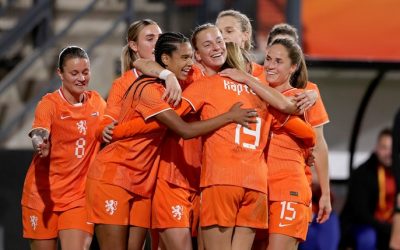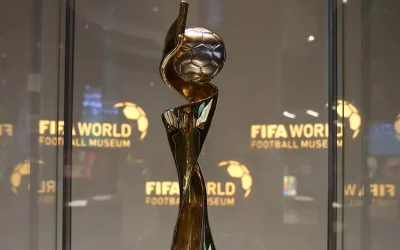
Now that the European football leagues are over, attention is turning to Switzerland, where the UEFA Women’s EURO 2025 will take place in July. It will not only be the stage for the best European players, but also for numerous prominent brands that have already discovered women’s soccer as a marketing platform. It is the perfect time for all brand managers to ask themselves: What potential does women’s football offer for a brand? And how can this be successfully exploited?
Even before the opening match in Basel kicks off, one thing is clear: the UEFA Women’s EURO 2025 will be a record-breaking tournament. Compared to the previous tournament in England, the European Football Association is expecting revenue to double – a clear signal that women’s football is currently one of the most dynamic sports environments for brand advertising.
Global brands such as Carlsberg, Unilever and PepsiCo are taking advantage of this development. They have recently announced their entry or long-term extensions. The growing brand interest is not limited to the women’s national team tournaments. At European club level, UEFA is forecasting a quadrupling of sponsorship income over the next decade up to 2033.
What makes women’s football so attractive as a marketing platform?
Three factors stand out:
- Firstly, the development of new target groups
- Secondly, the high impact potential due to above-average sponsorship acceptance
- Thirdly: Storytelling with relevance, credibility and emotionality
This can be demonstrated using the Google Pixel Women’s Bundesliga as an example. The potential fan base in Germany comprises around 7.9 million people (aged 16 to 69) who show a strong interest in the women’s Bundesliga. Remarkable: the equal distribution between female (47 per cent) and male fans (53 per cent) – a significant difference to the men’s Bundesliga, whose fan structure is much less balanced (only 33 per cent female). The comparatively high proportion of young female fans among the very keen fans is also striking.
Overall, it can be said that the target group for women’s football is a progressive audience – in other words, an attractive brand target group that is more difficult to address using other forms of advertising.

Another plus point for brands: sponsorship in women’s football enjoys a significantly higher level of acceptance among recipients. In the women’s Bundesliga, it is 52 per cent – significantly more than among fans of the men’s Bundesliga.
Involvement in women’s sport is an expression of value-oriented brand management – and much more
According to analyses by the sports and entertainment marketing company Two Circles, using this potential through good storytelling offers very good opportunities to give your own brand a positive boost.
Involvement in women’s sport is therefore not only an expression of modern, value-orientated brand management – it also offers concrete scope for action to effectively achieve brand objectives.

Still not convinced? Still too sneezy for marketing? A look at the marketable audience – using the example of the health and wellness sector – could inspire a rethink.
The chart below illustrates the significant difference in pure interest potential between the men’s and women’s Bundesliga. However, when additional criteria such as regular reception, sponsorship acceptance and specific industry interest are taken into account in an audience breakdown, it becomes clear that the women’s Bundesliga reaches a marketable audience of almost the same size in this specific case. This is clear evidence that it takes more than just interest potential to evaluate the efficiency of sponsorship platforms for addressing target groups.



